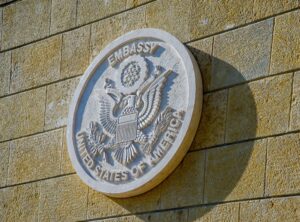Cyclists will be able to find out the best routes to avoid air pollution in British cities, as part of a new project by the air quality data specialist EarthSense Systems and Ordnance Survey.
The initiative will use real-time air quality data from a network of fixed and static air pollution sensors, and combine this with Ordnance Survey (OS) geospatial information to provide city-wide visualisations of air quality, and map out the cleanest routes.
The project will provide data on the cleanest cycle routes in citiesEarthSense, which is a joint venture between aerial mapping company Bluesky and the University of Leicester, is leading the project which it says will allow users to identify cleaner air routes, such as through parks or along canal paths.
Professor Roland Leigh, Technical Director of EarthSense, said: “By making it easy for cyclists to see pollution levels before they make their journey, we can help them make better decisions about their route. This maximises the gain they are getting from the exercise whilst minimising their exposure to harmful pollution.”
Using data from a city wide network of sensors, including the EarthSense Zephyr sensor, the company captures real time air quality measurements.
Forecast
Combined with other inputs, including satellite observations, weather conditions and traffic emission data in its MappAir modelling solution, EarthSense provides data for forecasting, master planning and identifying cleaner cycle routes.
The data is available hourly, with a forecast up to three days, and historically, with resolutions ranging from 1m for detailed study areas to 10m for full city maps, and 100m for the national picture.
The OS Open Greenspace product, used to communicate the EarthSense modelled air quality levels, depicts the location and extent of recreational and leisure facilities. Features included in the data are parks, play spaces, golf courses, allotments and more.
Phillip Wyndham, Strategic Development Manager at the Ordnance Survey, added: “EarthSense delivers a powerful data visualisation of air pollution levels within a city. The data provides clear information to the public, allowing them to make decisions on the best, and cleanest, walking and cycling routes to take. At OS, we are actively encouraging everyone to get outside, and this is another great tool to enable people to discover the greenspaces in our towns and cities.
“The insights gained from such modelling can also be used by policy makers and city planners to make practical interventions around mitigating hot spots — such as traffic light phasing, coordination of streetworks or correctly maintained urban trees and hedges which can trap many harmful pollutants. Data visualisation with a geospatial backdrop is a powerful way to analyse and display data from other third-party sources, and this is exactly the type of innovation which OS OpenData is designed to support.”












